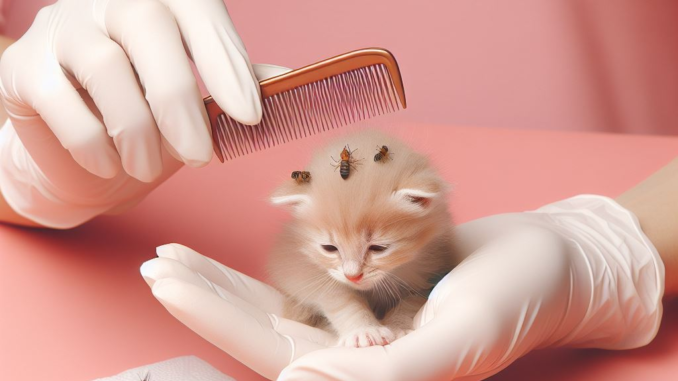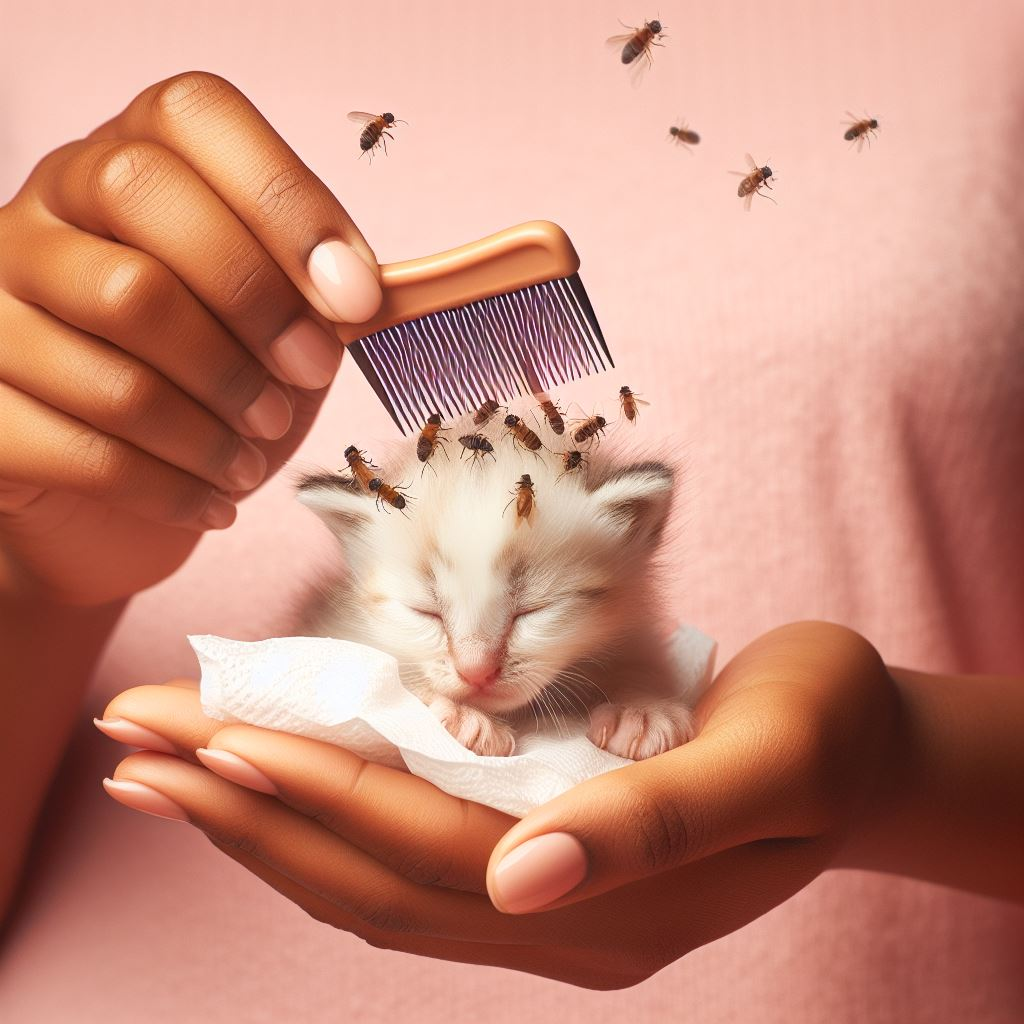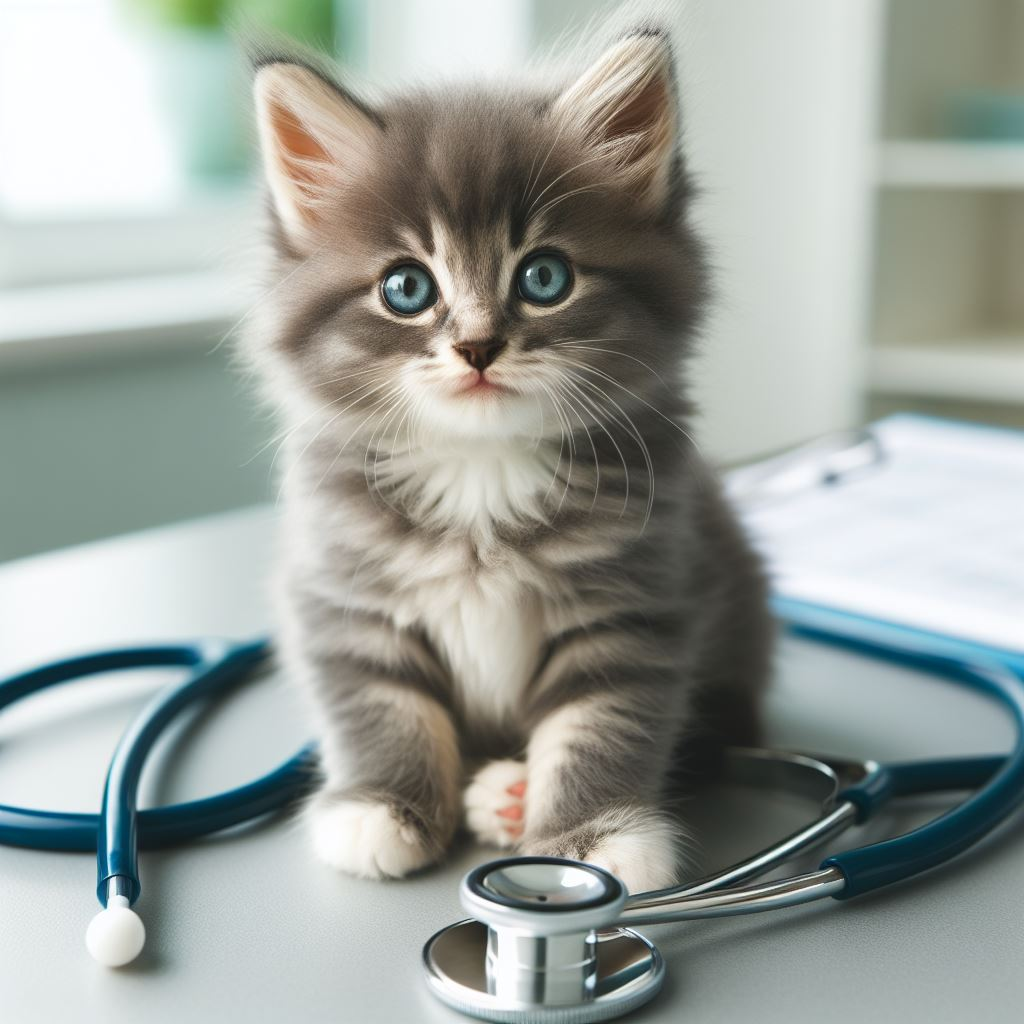
How to Get Rid of Fleas on Newborn Kittens
Oh man, finding fleas on newborn kittens is like every new pet owner’s nightmare! As someone who just went through this with my own litter of rescue kittens, let me tell you – dealing with these tiny vampires requires some finesse.
I know they look small and helpless, but trust me, fleas can do some serious damage to tiny kittens. An infestation can make them anemic and lethargic pretty quickly. So, while your first instinct might be to nuke them with the harshest bug killers out there, that usually does more harm than good at this delicate age.
The key is balance – knowing how to tackle fleas effectively without harming the kitten’s health and development. Here’s what I learned after many sleepless nights battling the flea scourge on my fur babies!
Know Thy Enemy – How Fleas Operate

Sun Tzu wasn’t talking about fleas in The Art of War, but knowing these bugs’ life cycles is key to defeating them.
Here’s a fun fact that blew my mind: Only 5% of fleas are actually on your cat at any time! The rest are hanging out around your home in various stages of development – eggs, larvae, pupae, and waiting to pounce on your poor kitten. Gross and kind of scary when you realize the extent of the hidden infestation, right?
So flea control isn’t just about treating the kitten – you gotta tackle their whole ecosystem both on and around your furry friend. It’s a hassle for sure, but it’s worth it in the end, my friend.
Safe Flea Removal Methods for Delicate Kittens
When dealing with tiny newborn kittens, most commercial flea treatments are off-limits before they hit 6-8 weeks old. The good news is there ARE safe, natural ways to tackle these pests without endangering your kittens’ health. Here’s what worked wonders for me:
The Gentle Comb Out: Sometimes going back to basics is best. I found a high-quality flea comb for kittens and went to work removing those bugs manually. Tedious? You bet. But also super satisfying to ditch those bloodsuckers into a bowl of soapy water right after pulling them off my helpless fur babies. Be thorough and check their entire coat, especially around the neck and base of the tail.
Frequent Flea Baths: As often as twice a week, I’d give my kitties a nice warm flea shampoo bath in the sink or a shallow tub (carefully supporting them of course). Make sure to use a gentle kitten formula shampoo. The warm water makes fleas lose their grip, and down the drain they go!
Bathing Precautions for Kittens
While bathing can tackle a lot of fleas, you gotta be really careful with tiny kittens.
Here are a few tips:
- Limit baths to a maximum of twice a week – their skin is sensitive!
- Tear-free and non-medicated shampoo only
- Rinse super thorough – kittens will try to lick themselves clean! Don’t need them ingesting shampoo.
Stuff You SHOULDN’T Use on Kittens
Some things often used for fleas are big NO-NOs for kittens:
Permethrin – used in popular spot-on treatments like Frontline. Kittens can’t metabolize it well. Bad news!
Essential oils – Natural, but still toxic for cats due to their unique physiology
Better to be safe than sorry! Avoid these, even if they seem convenient.
Treat the Whole House, too!
Since most of the flea population in your home is of your kitten, environmental decontamination is a must:
Wash all bedding, blankets, nooks, and crannies your kitten frequents in hot, soapy water regularly.
Vacuum all floors, crevices, and furniture with a vengeance! Suck up the flea eggs well.
Consider foggers/sprays if the infestation is really bad. Ask your vet for pet+kitten-safe options.
If mama cat also has fleas, she needs treating too or will just reinfest the babies. Break that nasty cycle!
Graduating to Commercial Flea Treatments
Once your kittens hit 8-10 weeks and over 2 lbs, you can look into commercial anti-flea products like Frontline. But don’t just grab any old flea collar or drops! Consider:
Carefully evaluate labels for age/weight appropriateness. Not all cat products are ok for babies!
Consult your vet for the most effective + safest option for your kitten.
Prescription treatments might be best for heavy infestations. More powerful and kitten-safe.
Keep Fleas Away for Good!
Consistency is key when battling fleas long-term. Stick to a plan, folks:
Maintain flea meds/treatments on ALL your pets year-round. One missed dose can restart the nightmare!
Stay diligent in washing, vacuuming, and cleaning pets’ spaces/bedding.
Remember, fleas can be a year-round menace depending on climate. Don’t pause prevention measures based on seasons!
Watch out for Flea Allergy Dermatitis, too – some cats get crazy itchy and develop infected sores from flea bites. Symptoms: excessive scratching, skin crusting/wounds around neck and tail. Time for a vet visit!
Lastly, keep an eye on your kittens’ health even after treating fleas. Watch for pale gums, weakness, and anemia. Call the vet promptly if anything seems off after flea removal – tiny bodies bounce back slower.
Phew, this flea business with newborn kittens is not for the faint-hearted! But armed with the right info, you can tackle those nasty bugs without endangering your fragile fur babies. Gentle patience and steady prevention does the trick.


Leave a Reply